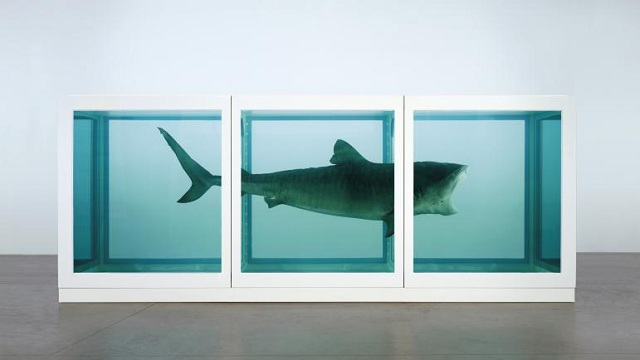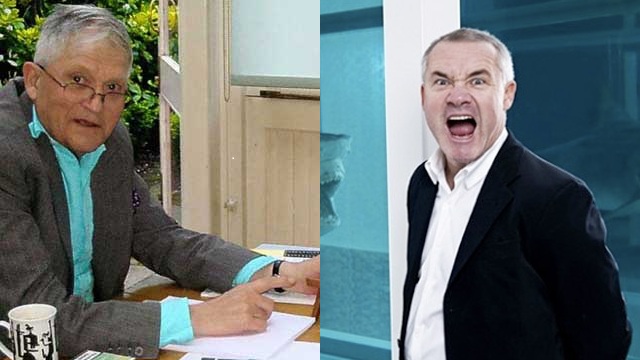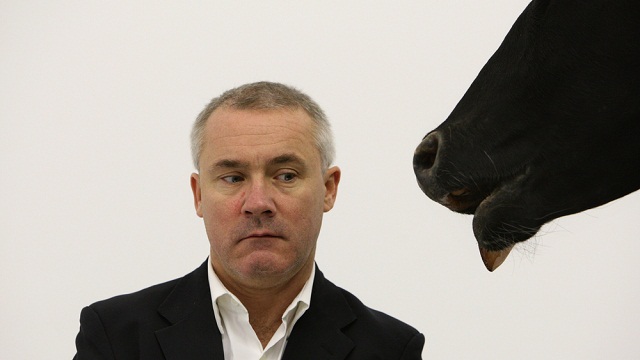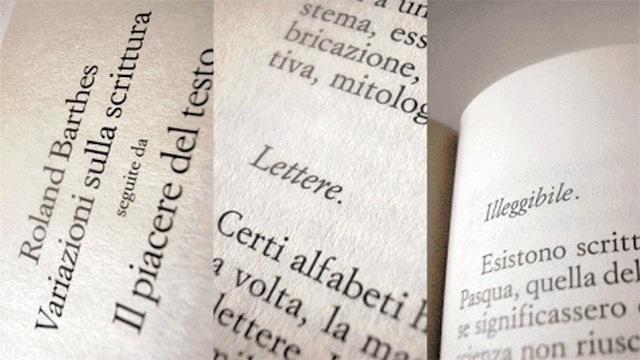Copycat: Damien Hirst, Plagiarist?

When you compile a list of artists that other artists love to hate, a few names typically appear: Jeff Koons, Thomas Kinkade, and, perhaps most virulently, Damien Hirst. You can call it jealousy over their financial success, or you can call it disdain for the artwork that brings those riches home, but people in the art world just can’t stand those three. Koons offends with his kitschy pieces relentlessly marketed. Kinkaide draws ire with the cloying pseudo-religiosity of his calendar- and greeting card-ready landscapes. But Hirst twists artists’ knickers by rolling in the dollars with work that repeatedly echoes, to put it kindly, the art of lesser-known artists. A recent article in The Guardian outlined the most recent claims of plagiarism against Hirst. Hirst refuses to comment, but many believe his silence is the meek meow of a copycat.
Charles Thomson, co-founder with Billy Childish of the Stuckists art movement, collects no less than 15 cases of alleged plagiarism on the part of Hirst in a recent issue of Jackdaw. The Stuckists strive to bring back figurative art and decry the conceptual art of Hirst and his ilk. What burns the Stuckists most, it seems, is the sheer repetitiveness of conceptual art, as if Duchamp’s generation exhausted all the possibilities and all that’s left is to replay their greatest hits. “Joseph Cornell displayed a cabinet with bottles on shelves called Pharmacy in 1943,” writes Thomson, alluding to Hirst’s 1992 version also called Pharmacy (detail shown above). Thomson cannot abide how Hirst, in his view, not only stands on the shoulders of these giants, but also on the shoulders of artists who haven’t realized a fraction of his financial wealth. “Hirst is a plagiarist in a way that would be totally unacceptable in science or literature,” Thomson concludes. Unfortunately, at least for these artists Hirst allegedly steals from, the visual realm plays by a different set of rules than those of the written word or the scientific field, in which duplication is almost always obvious and almost always punished. There’s a thin line between homage and theft in the visual arts, and Hirst walks that line like a razor’s edge.
Amazingly, Hirst didn’t just copy the long dead, but also contemporary artists literally beside him. John LeKay, with whom Hirst exhibited in the 1990s and once considered Hirst a friend, saw his crucified sheep and jewel-encrusted skulls co-opted by Hirst into multimillion dollar works such as For the Love of God. Luckily for Hirst, LeKay’s Buddhism precludes him from pursuing material compensation. Instead, all he wants is an admission of guilt from Hirst. Money might be a more realistic goal at this point.
Personally, I don’t think Hirst will ever be brought to justice. The “alleged” label clings tenaciously to all these charges. Hirst is sly enough to play within the boundaries of the art world. His financial resources command legal representation that makes that advantage almost undefeatable. I think that it’s up to the court of art history to render judgment on Hirst. That’s no consolation to the artists Hirst has allegedly stolen from, but it’s a sad fact of art history that the real winners and losers sometimes never live long enough to know which side they’ll fall on.





